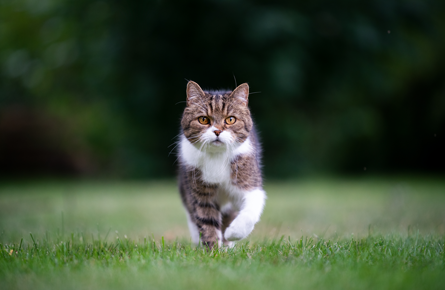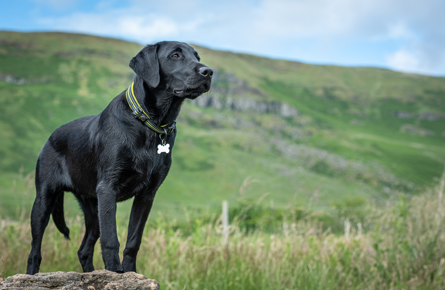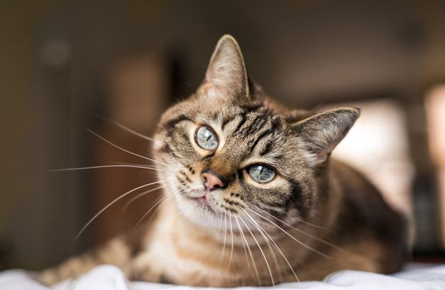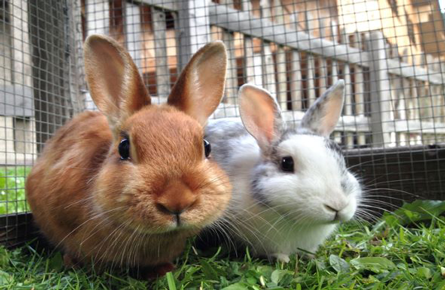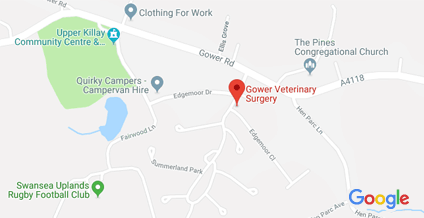We are open for emergenices only 9am-12pm on bank holiday Monday. Please click here to view the latest information on how to access our services.
What is Dog Microchipping?
Microchipping is a painless and quick procedure which can help you reunite with your pet should they ever go missing or be stolen. A microchip is a tiny little ID chip, the size of a grain of rice. It is implanted underneath your dog’s skin near the scruff.
Every microchip will be uniquely allocated an ID number. This number can be picked up by a portable detection scanner which will identify the number, and therefore access all your details upon doing so. Local authorities, most veterinary clinics, and even hospitals will have access to one of these devices. By identifying your details, it’s far easier to reunite your dog with you if they ever go missing.
Book a microchipping appointment
Dog Microchipping and the Law
It is the law for dogs to be microchipped! You can be fined up to £500 if your dog has not been microchipped so it’s worth taking note that if you’re planning on taking your dog abroad they must have a pet passport, and be microchipped!
It is not necessary for us to sedate your dog before implanting the microchip – this procedure is painless and will not cause discomfort. It can be done quickly via a routine consultation. It’s also okay if you’re unsure whether your dog has been microchipped – we can easily detect this using a scanner. You can also come into Gower Vets to check that the microchip is working correctly.
We always make sure your dog doesn’t already have a microchip in them before we carry out any dog microchipping.
Dog Microchipping Procedure
Prior to dog microchipping, we will ask you to complete a registration form – where we will access your details that are submitted to a larger database which can be accessed via the portable scanner. A member of Gower Vets will upload your information allocated to your dog’s specific microchip. For your dog’s lifetime, this information will remain on the database, and the fee for this is already included within the implantation costs.
Book a microchipping appointment
Contact Us for Dog Microchipping in Swansea
Just bought a new puppy? Or perhaps you've got a rescue dog that hasn't been microchipped. Contact Gower Vets here, or call us on 01792 299111.
If your kitten or cat requires cat microchipping in Swansea then continue reading! Gower Vets have an amazing team of highly trained veterinary nurses who are well experienced in microchipping animals.
Book a microchipping appointment
Why is Cat Microchipping Important?
Microchipping is one of the most important things you can do for your cat. It is estimated that around 2 million cats in the UK are still not microchipped, making it hard to connect them with their owners should they ever go missing or get stolen. There is a small risk of cats being stolen by criminals who sell them – but by microchipping, this risk is reduced as your details are imprinted into your cat’s chip.
Cats are territorial creatures, and while they might not venture too far from your home, they will have a set parameter around their base that they will travel to, outside the walls of your house or garden. Outdoor cat owners all share the panic felt when your cat doesn’t come home for a long time. With microchipping, you can have peace of mind that you’re connected to your cat all the time.
Stay Connected to your Cat With Cat Microchipping
Every microchip has a unique number that can be read by a portable scanning device. The unique code is individually registered under your animal and contains your contact details and identification details.
The portable scanning device is a common piece of equipment held by local authority centres, most veterinary practices, hospitals, and rescue homes. This means it’s easy for your contact details to be found, as they’ll be entered onto the microchipping database, electronically connecting you with your animal.
Once this has been scanned and your details are discovered, you’d get a phone call to reunite you with your pet.
Does your Cat Require Cat Microchipping in Swansea?
Your cat might be ready to start leaving the house soon if it’s old enough. Or maybe you’ve got a rescue cat and you need to get them chipped.
Gower Vets in Swansea have a friendly team of veterinary specialists who can implant cat microchips.
We offer microchipping for other animals too! Microchipping is not only for dogs, but also for cats, ferrets, rabbits, snakes, parrot, tortoises, and horses.Contact us today to book your microchipping appointment to help keep your cat protected!
Flea Treatment in Swansea
Gower Vets in Swansea offer a professional and informative flea treatment service for your pet. Read here to find out all about fleas, how to spot the symptoms of fleas on your cat or dog, and how Gower Vets can help with flea treatment.
What are fleas?
Gower Vets in Swansea offer a professional and informative flea treatment service for your pet. Read here to find out all about fleas, how to spot the symptoms of fleas on your cat or dog, and how Gower Vets can help with flea treatment.
Fleas are the most common parasitic problems that pets have. They can cause many skin problems, and can really affect your pet’s mood, as they are itchy and uncomfortable.
Adult fleas can stay inside their cocoons for up to 6 weeks before fully emerging. Fleas infest your home so quickly – and it only takes one flea in your home to cause an infestation.
Your pet may pick up fleas from eggs which are left behind outside by other animals such as hedgehogs and rabbits. Once they’ve jumped on to your pet, they begin laying eggs and feeding on their blood.
Does my pet need Flea Treatment?
Fleas are minute little insects, so they’re quite hard to spot. They don’t have wings but can jump up to 8 inches high from the ground. Most pet owners only notice their pet has fleas by picking up on their symptoms.
How to spot whether your pet may have fleas:
- Scratching at themselves, which may irritate the skin
- Flea excretion residue on your pet’s skin or fur
- Small bumps on the skin
Flea Treatment: How it works
Your vet will prescribe a course of flea treatment for your pet depending on each case. In most cases, the flea treatment comes in a liquid form and is applied to the back of your pet’s neck.
There are other types of flea treatment products available so we’d advise that you speak to your vet to construct a flea treatment plan which will suit you and your pet’s lifestyle. For example, you may be given spot on treatment (topical), flea tablets, or flea collars
Flea treatment Swansea with Gower Vets
There are always new flea treatment products emerging on a yearly basis. Gower vets in Swansea have up to date advice and treatment available. We can help you select the best kind of flea protection for you and your pet. We dispense prescription-based flea treatment only, as this is safer and more effective than treatments bought over the counter. These prescription medicines are designed to combat other parasites in the same medicine.
Under the UK law, only veterinary surgeons can prescribe your pet with prescription treatments. Vets are required to carry out a health assessment on a pet before prescribing them. Usually, a health check is needed on a 12-month basis, and this may fall under your pet’s annual health booster check.
Does your pet require flea treatment in Swansea? Contact Us.
Gower Vets are professional, knowledgeable, and friendly, and we can offer the correct flea treatment for your pet.
At Gower Vets in Swansea, we advise that your dog’s dental hygiene is just as important as any other routine and preventative treatment. Like humans, dogs can develop a build-up of tartar, leading to tooth decay and gum disease.
Brushing your dog’s teeth once or twice a day is the best option for good oral hygiene. We also have products such as liquids to add to their water to help reduce plaque build-up and reduce bad breath (halitosis), as well as veterinary dental diets. Here at Gower, our team would be happy to assist you with answering any questions you may have about dog dental care, as well as advising you on the recommended products or diets for your dog.
Symptoms of dental disease in dogs
Dogs can be very good at hiding signs of oral pain and dental disease. Some dogs with severe dental disease, including root exposure, severe gingivitis (inflammation of the gums), and tooth root infections, will continue to eat, showing only subtle signs that something is wrong. This can result in a dog having multiple teeth extracted at one time as opposed to one tooth extraction. Buildup of plaque and tarter will not be removed by teeth brushing alone if this is already present, the best action for this is a scale and polish to remove this, followed by tooth brushing to prevent the buildup occurring again. A general anaesthesia is required for all dental procedures, however, having a routine scale and polish carried out to prevent dental disease from progressing is a hugely reduced anaesthetic time compared to multiple extractions being carried out.
What are the signs of dental disease?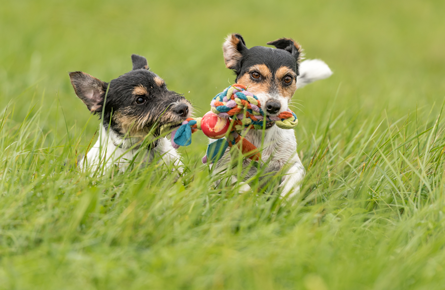
- bad breath (halitosis)
- visible tartar build-up on teeth
- red or inflamed gums (gingivitis)
- discoloured teeth
- drooling
- loose teeth
- bleeding from the mouth
- slowness or reluctance to eat
- chewing on one side of the mouth
- dropping food from the mouth when eating
- swelling around the mouth (from potential tooth root abscesses).
How can this be prevented?
The best way to maintain healthy teeth is to brush your dog’s teeth daily, which is a basic part of dog dental care. This is easiest to start when your dog is younger but can be introduced at any age. The Gower Vets team would be happy to help with advice on introducing this to your dog.
As part of your dog dental care routine, it can also be beneficial to have a scale and polish performed regularly to clean the teeth thoroughly. This is similar to the treatment we would receive from a dental hygienist. These are done under a short general anaesthetic as dogs won’t sit in one position for a prolonged period and we must ensure their safety and the team’s safety when in the vicinity of sharp teeth!
Why does dog dental disease occur?
Food and saliva that is left behind on the teeth will form plaque on the tooth. Plaque is soft and can be removed by brushing or using alternative dental products. If not removed, the plaque will harden forming tartar, which is difficult to remove without dentistry intervention. If tartar is not removed (normally via the scale and polish procedure) then bacteria will spread below the gumline, causing red sore gums. This is called gingivitis and periodontitis, which in turn can lead to loose teeth, infection of the tooth root and jawbone infections. If you require more dog dental care tips or advice, please don't hesitate to contact Gower Vets for more information.
Here at Gower Veterinary Surgery in Swansea we understand that your cat’s dental hygiene is just as important as any other routine and preventative treatment. This is why we advise dental care for preventable diseases. Like humans, cats can develop a build-up of tartar, which can lead to tooth decay and gum disease. Brushing your cat’s teeth once or twice a day is the best option for good oral hygiene. Here at Gower Vets, our team would be happy to assist you with answering any questions you may have, as well as advising you on the recommended products or dental diets for your cat.
We believe it is really important to ensure that you implement a regular cat dental care routine so that your cat's teeth are healthy and protected.
Symptoms of dental disease in cats
Cats can be very good at hiding signs of pain and often, owners aren’t aware that their cat has the dental disease; this is why our vets and nurses perform a cat dental check at each general consultation. Some cats with severe dental disease, root exposure, severe gingivitis (inflammation of the gums), or tooth root infections will continue to eat, showing only subtle signs that there is a problem. Catching dental diseases early can reduce the number of extractions required from not noticing earlier signs of cat dental disease.
Plaque can be removed by tooth brushing; however, tarter will not be removed by brushing alone; if this is already present, the best action for this is a scale and polish to remove this, followed by tooth brushing to prevent the buildup from occurring again. A general anaesthesia is required for all dental procedures; however, a scale and polish procedure is much shorter with a faster recovery compared to your cat having multiple extractions.
What are the signs of cat dental disease?
- bad breath (halitosis)
- visible tartar buildup on teeth
- red or inflamed gums (gingivitis)
- discoloured teeth
- drooling
- loose teeth
- bleeding from the mouth
- slowness or reluctance to eat
- chewing on one side of the mouth
- dropping food from the mouth when eating
- swelling around the mouth (from potential tooth root abscesses).
How cat dental disease be prevented?
The best way to maintain healthy teeth is to brush your cat’s teeth daily as part of a regular cat dental care routine. The Gower Vets team would be happy to help with advice on introducing this to your cat.
It can also be beneficial to have a scale and polish performed regularly to clean the teeth thoroughly. This is similar to the treatment we would receive from a dental hygienist. These are done under a short general anaesthetic as cats won’t sit in one position for a prolonged period and we must ensure their safety and the team’s safety when in the vicinity of sharp teeth!
Feline odontoclastic resorptive lesions (FORLs)
Cats also get another form of dental disease known as feline odontoclastic resorptive lesions (FORLs). It has an unknown cause, but 75% of cats are thought to be affected. It is particularly common in cats over five years but can occur at any age.
In these lesions, part of the tooth is eaten away by the tooth itself, forming a small hole in the enamel close to the gum line. These lesions are very painful for cats and can lead to tooth fractures as they weaken the teeth. They require extraction to resolve.
If you need any more cat dental care advice and tips then please don't hesitate to contact Gower Vets.
Page 5 of 8
-
Veterinary Surgeon
Location: 68-31 Edgemoor Close, Upper Killay, SwanseaHours: Full timePractice: Gower Veterinary SurgerySalary: £60,000 per annum, £4,000 welcome bonus, Salary up to and dependent on experienceRead more


